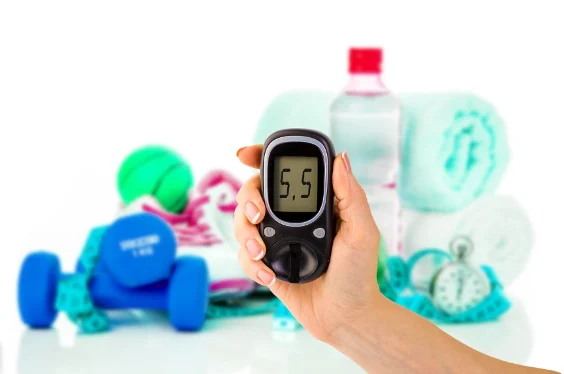Type 2 diabetes (T2DM) is a result of progressive loss of insulin secretion and is usually coupled with insulin resistance. While there is a genetic predisposition to having type 2 diabetes, the risk of having it is greatly increased by:
- Sedentary lifestyle
- High blood pressure
- Being overweight
- Poor dietary habits
T2DM can affect everything in your body from your head to yours toes and can lead to a range of health problems over time. If uncontrolled, elevated blood sugar can damage arteries and raise cholesterol, increasing your risk of cardiovascular disease and kidney disease. It can damage blood vessels in your eyes which can develop serious eye conditions. T2DM can also damage nerves and cause circulation problems which lead to foot problems and nerve damage.
Exercise has been shown to help reduce blood glucose levels and HbA1c levels and help lower the dose of insulin required by improving the bodies response to insulin. It can also help those that are pre-diabetic to reduce the development of further diabetes.
What types of exercise can help?
Aerobic – regular cardiovascular training has demonstrated to increase insulin sensitivity which in turn will help reduce blood sugar levels with the bonus of improving heart and lung function. By simply completing 30 minutes of exercise daily, which can be broken up into 3 x 10 minutes bouts, you are already on your way to manage your diabetes.

Aerobic – regular cardiovascular training has demonstrated to increase insulin sensitivity which in turn will help reduce blood sugar levels with the bonus of improving heart and lung function. By simply completing 30 minutes of exercise daily, which can be broken up into 3 x 10 minutes bouts, you are already on your way to manage your diabetes.
Resistance – strength training can improve glycaemic control, insulin resistance, lower blood pressure and fat mass. It has also been shown to improve mental health, physical function, and bone density.
Flexibility and Balance – in older adults with diabetes, it is important to maintain flexibility and balance. Limited joint mobility is often a side effect of hyperglycaemia. Stretching can increase the range of motion around joints, helping limit further stiffness. Balance training can reduce falls risk even with peripheral neuropathy is present. Group exercise classes have proven to reduce falls by up to 29%. These two types of exercise do not help with reducing blood sugar but can help with some complications of diabetes.




